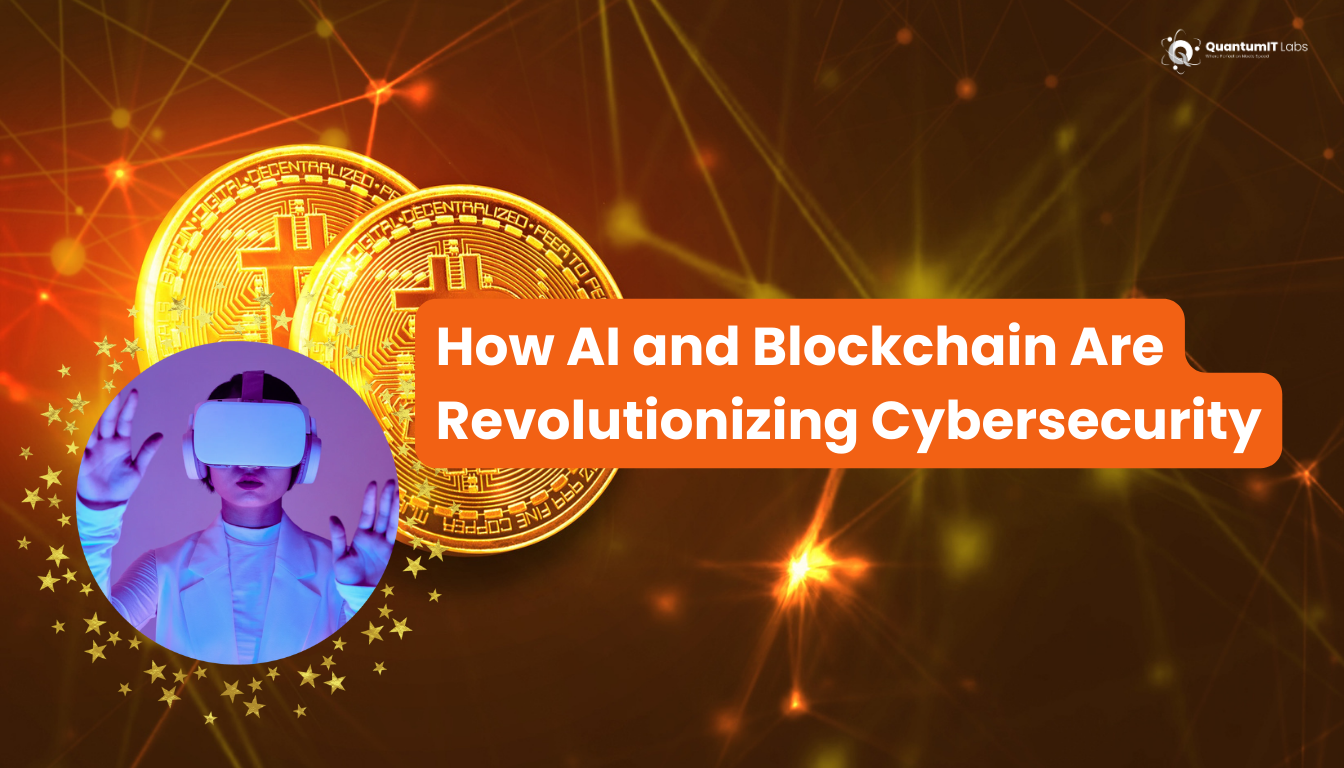Introduction
In today’s digital era, cybersecurity threats are evolving at an alarming rate. With cybercriminals using sophisticated techniques to breach systems, traditional security measures are no longer sufficient. Enter Artificial Intelligence (AI) and Blockchain—two groundbreaking technologies reshaping the cybersecurity landscape. Together, they offer proactive defense mechanisms, improved threat detection, and unparalleled data security. This blog explores how AI and Blockchain are transforming cybersecurity and safeguarding digital ecosystems.
The Role of AI in Cybersecurity
AI has become a game-changer in the fight against cyber threats. Here’s how:
1. Advanced Threat Detection
AI-powered security systems use machine learning algorithms to analyze vast amounts of data in real-time, identifying suspicious activities and potential cyberattacks before they occur. These systems continuously learn and adapt, making them highly effective in detecting zero-day attacks and advanced persistent threats (APTs).
2. Automated Incident Response
AI enables faster response times by automating threat analysis and mitigation. Security teams can leverage AI-driven security operations centers (SOCs) to handle alerts and prioritize critical threats, reducing human intervention and minimizing response time.
3. Behavioral Analysis & Anomaly Detection
AI monitors user behavior and system activities, detecting deviations that may indicate potential cyber threats, such as insider attacks or unauthorized access. This helps in preventing fraud and data breaches.
4. AI-Powered Fraud Prevention
From financial transactions to authentication systems, AI-driven security mechanisms help prevent fraud by detecting unusual patterns, blocking unauthorized access, and enhancing identity verification processes.
The Role of Blockchain in Cybersecurity
Blockchain, known for its decentralized and tamper-proof nature, is making significant strides in enhancing cybersecurity. Here’s how:
1. Decentralized Data Security
Unlike centralized systems that store sensitive data in one place, making them prone to attacks, blockchain distributes data across multiple nodes. This makes it resistant to hacking attempts and eliminates single points of failure.
2. Immutable Transactions & Data Integrity
Blockchain ensures that once a piece of data is recorded, it cannot be altered or deleted. This immutability helps prevent data tampering, ensuring the authenticity and integrity of critical information.
3. Enhanced Identity Management
Blockchain-based digital identity solutions offer a secure and transparent way to authenticate users without relying on traditional passwords, which are vulnerable to phishing attacks.
4. Secure IoT Networks
As the number of Internet of Things (IoT) devices increases, so do security risks. Blockchain helps secure IoT networks by providing a distributed trust system, preventing unauthorized access and mitigating risks of data breaches.
The Synergy of AI and Blockchain in Cybersecurity
The real power lies in combining AI and Blockchain to create a more resilient cybersecurity framework:
- AI Enhancing Blockchain Security: AI can monitor blockchain networks for anomalies, detect fraudulent transactions, and improve overall efficiency.
- Blockchain Strengthening AI Data Security: Blockchain ensures that AI systems operate with verifiable and untampered data, reducing the risk of bias or manipulation in AI-driven security systems.
- Automated Threat Management: The integration of AI with blockchain-based smart contracts can enable real-time automated responses to cyber threats, minimizing damage and downtime.
Real-World Applications
Many industries are already leveraging AI and Blockchain to bolster cybersecurity:
- Financial Sector: AI-driven fraud detection and blockchain-based secure transactions are preventing cyber fraud.
- Healthcare: Patient records stored on blockchain networks ensure privacy, while AI detects potential breaches.
- Supply Chain Security: AI monitors supply chain vulnerabilities, and blockchain ensures transparency and authenticity of transactions.
Conclusion
As cyber threats continue to evolve, the integration of AI and Blockchain is proving to be a revolutionary force in cybersecurity. While AI enhances threat detection and automated response, blockchain ensures data integrity and decentralized security. Together, these technologies offer unparalleled protection against cyber threats, paving the way for a safer digital future.
Businesses and security professionals should embrace these technologies to stay ahead of emerging threats and fortify their cybersecurity infrastructure. The future of cybersecurity is not just about defense—it’s about intelligent, adaptive, and decentralized security solutions that keep digital assets safe in an increasingly interconnected world.
How We Can Help
At QuantumIT labs, we specialize in implementing AI-driven security solutions and blockchain-based cybersecurity frameworks tailored to your business needs. Our team of experts can help you safeguard your digital assets with cutting-edge technology. Contact us today to learn more!

